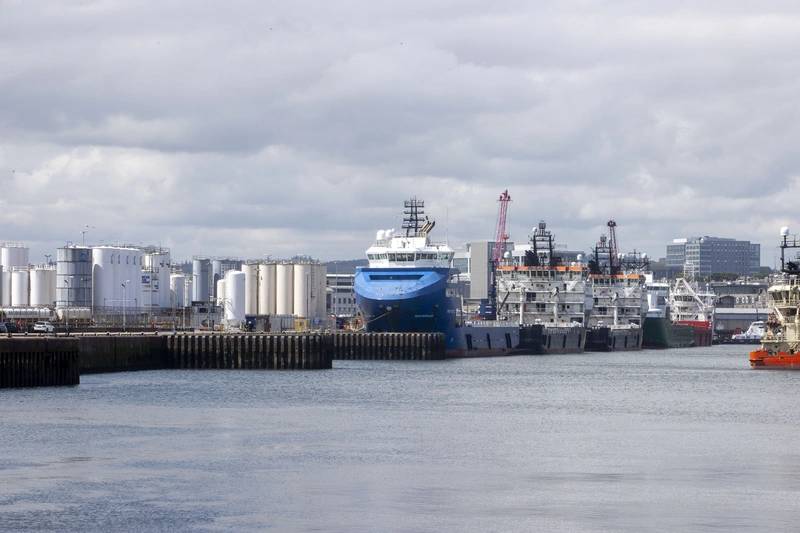Tech File
Safety Systems
Wireless Gas Detection in the Oil, Gas & Offshore Sectors
Gas detection and monitoring has long-been a key priority for the energy sector, but there has arguably been little innovation in the space. Until now.
By Megan Hine, Draeger Marine and Offshore
A wireless gas detection device in situ offshore.
Photo courtesy Draeger Marine and OffshoreWireless technology may have become ubiquitous in most people’s lives for quite some time, but it’s only relatively recently (the last six or so years) that it has become a viable option for gas detection and monitoring for the oil, gas and offshore sectors.
The reasons for this coming of age are, broadly, split into two key areas.
Firstly, industrial wireless technology has seen significant advances in recent years. Whilst the early adoption of wireless gas detection developed a poor reputation for patchy coverage and unreliable connections, data communications are now guaranteed; a crucial component for effective wireless monitoring systems, and which allows for detection of gas to be communicated reliably and in real-time using an ISA 100 industrial wireless system. This system is guaranteed to be secure and is specifically designed to carry small data packages, of around the size of 10 text characters, within a specified timeframe and with complete reliability.
Secondly, there has been considerable progress when it comes to innovation in relation to device power consumption. Battery life has historically been a significant issue for wireless gas detection, but some of the more recent advances in technology have resulted in step-change reductions (in some cases by orders of magnitude) in power consumption, and this has been critical in offsetting more power-hungry functions which have otherwise advanced device functionality.

The result is that battery life has improved considerably, with certain devices on the market guaranteeing up to two full years of battery life, compared to only a few months in the early days.
The cumulative impact of this, and other minor, innovation has been significant, and importantly, comes at a time when many legacy (wired) gas detection installations are now desperately in need of updating.
Two or three decades after the UK’s first wired gas detection devices were introduced, both the technology and key drivers for monitoring have evolved. Environmental issues related to methane detection could soon rank alongside ongoing safety concerns around explosion risk etc, and standards around coverage and numbers of devices have also changed. Often, it is the inflexibility of hard-wired networks to respond to these sorts of changes, plus the vast costs involved in replacing cabling, that is now prompting operators to explore wireless alternatives. To prove the flexibility of wireless gas detection, it is now possible to rent a compliant fixed gas detection system for short-medium term coverage.
The ability to do away with the miles of cabling, which often has a life span of just 10-15 years, is a major advantage of wireless technology. Although the outlay for a wireless device may initially be higher, when the saving on cabling alone can be three times the cost of the wireless device, it’s not a hard decision.
Flexibility is another key advantage – if for any reason a device is found to have been ineffectually-placed, or an additional device is required, there is no need for new and potentially disruptive groundwork or cable re-routing.
Installation and commissioning costs for wireless systems are typically a quarter that of a cabled system, and Equinor has published figures outlining installation cost savings with wireless detectors are approximately 60 per cent for an offshore installation, and 80 per cent for an onshore installation.
One of the final – and perhaps most substantial – advantages of wireless technology is the fact that no site downtime is required. Wireless devices are intrinsically safe, so can be installed on live sites, offering a huge additional cost saving.
Challenges do remain; and arguably the key barrier to adoption remains education and changing the poor perceptions around the technology, which still persist.
However, despite these challenges however, the significant savings (reports of 60-80% overall savings are not uncommon) are contributing to an accelerating pace of adoption.
Recently the largest wireless gas detection network ever seen in the North Sea was completed, which employs 120 wireless devices across a remote seven square mile site, and there is little doubt that this sort of project will become more commonplace as greater awareness develops and the full potential of the technology is realised.
About the Author:
Megan Hine is based in Aberdeen and is one of Draeger Safety UK’s lead contacts for gas detection and monitoring for the UK’s oil, gas and offshore sectors.